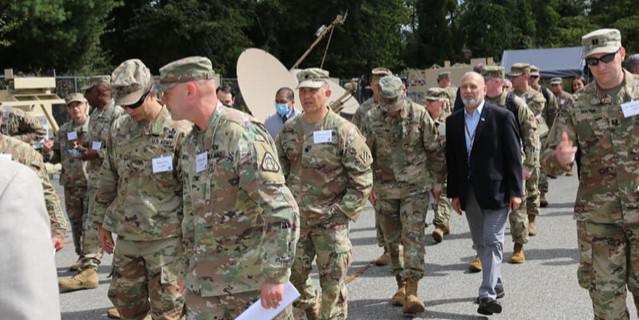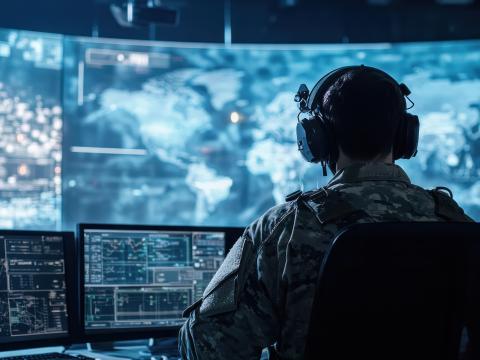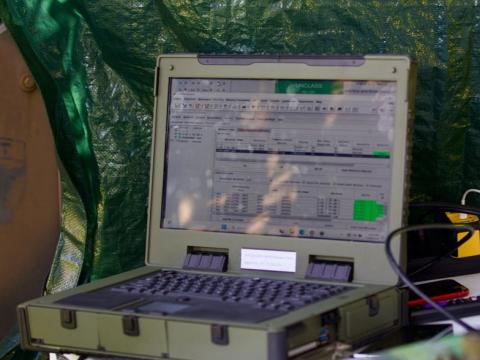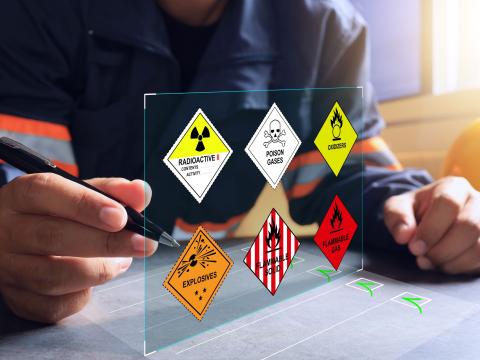U.S. Army Prepares Armored On-The-Move Pilot Program
The U.S. Army is moving beyond a forward-operating base ideal and is preparing for communications and operations geared instead toward near-peer competition in a contested environment. This winter, the Army’s Program Executive Office Command, Control, Communications- Tactical, PEO C3T, will conduct a new pilot program that will begin to identify what kinds of communications and network technologies could successfully be applied to moving armored vehicles to support soldiers in such an environment. The work is part of PEO C3T’s Capability Set 2025 (CS25) iterative effort to harness industry innovation and add tactical communication solutions in two-year sprints.
The so-called Armored Brigade Combat Team On-The-Move (ABCT OTM) network pilot program involves the consideration of concepts of operations and how to most effectively distribute capabilities in various configurations across a group of armored vehicles. The aim is to increase soldier survivability, enhance communications and provided greater throughput for data. Col. Shane Taylor, project manager, Tactical Network, PEO C3T, is leading the effort. General Dynamics Mission Systems, in Taunton, Massachusetts, is the contract prime and lead integrator.
To provide full communication capabilities—including line-of-sight and beyond-line-of-sight solutions—to soldiers in maneuver platforms, the pilot will test commercial solutions including: satellite communication (SATCOM) terminals; very small aperture terminals (VSAT); Ku-Band flat panel SATCOM on the move terminals (SOTM); waveforms; modems; routing and switching; antenna masts; mesh radios; network architectures; tethered drone; and ruggedized power solutions. In addition, the effort will consider alternatives for the legacy Satellite Transportable Terminal, or STT, system, which is currently deployed via trailer.
The pilot will look at different combinations of the equipment across three course of actions, or COAs, all designed to support groupings of Army intelligence, network, operations and fires personnel.
“Let me start with what it is not,” Col. Taylor stated. “The pilot is not intended to be a material selection, a down select. That is key to this. You're going to see a list of vendors that are partnering with us on this effort, however, if a vendor is not on there, it does not mean they are not playing moving forward. This is an opportunity to look at variety of technologies across maturity levels. And then from a CONOPS [concept of operations] perspective it is looking at how we would employ the kit, how we would execute the kit. It is an opportunity to get after that.”
Officials from the Army and General Dynamics briefed media representatives on September 23 in Taunton, following the previous day’s event with more than 60 officials from PEO C3T, the Network Cross Functional Team, 3rd Infantry Division, and 82nd Airborne.
General Dynamics has already received most of the equipment from the 23 vendors that will initially participate in the pilot. At its indoor manufacturing facility and its large systems integration Area 53 outdoor facility at Taunton, the company will spend the fall integrating the equipment into 16 vehicles. Twelve 1068’s will stand in as surrogate vehicles for future armored vehicles that could receive the technology dispersions, in addition to four high mobility multipurpose wheeled vehicles, or Humvees.
The service will conduct safety assessments in early November, followed by arrival of the vehicles to Ft. Stewart, Georgia a week later. Vendors will conduct network testing and risk reduction efforts in later December and early January. The actual execution of the pilot, with soldiers employing the technologies in operating scenarios at Ft. Stewart will run from January 24-February 11, officials reported.
PEO C3T plans to report the results of the pilot by June 2022. The information and tactical data gleaned from the pilot will be used to help inform the technologies needed for Armored Brigade Combat Teams to be deployed as part of CS25.
Subsequent SIGNAL articles will review the approach, technology and training considerations of the pilot.





Comments